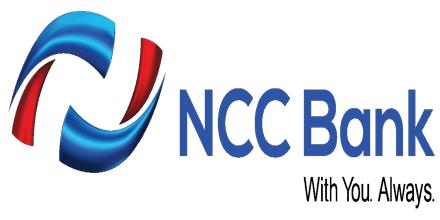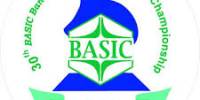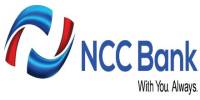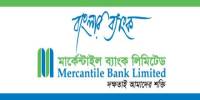The topic has been assigned “General Banking System” in National Credit and Commerce Bank Limited. The report has discussed how the bank operates their activities. Other objectives are to learn about the procedure of handling Inward and Outward Remittances by NCCBL to be acquainted with day to day functioning of service oriented Banking business. Finally review how NCC Bank perform their activities and explain the role played by NCC Bank in the economy of Bangladesh.
Objective of the study
The purposes of this report cognates the internship purpose. The internship objective was to gather practical knowledge and experience of the corporate working environment. To this regard this report is contemplating the knowledge and experience accumulated. So those who are helping us in every steps, we must know about them, that’s why objective of this report are-
- To present an overview and brief introduction of NCCBL.
- To know about General Banking.
- To learn about the procedure of handling Inward & Outward Remittances by NCCBL
- To be acquainted with day to day functioning of service oriented Banking business
- To review how NCC Bank perform their activities.
- To examine the role played by NCC Bank in the economy of Bangladesh.
To know about all these activities we have focused to a private commercial bank that “National Credit & Commerce Bank Ltd.”. From there we collect all required information that will help us to acquired knowledge about its products and services.
Methodology of the Study
In this study, exploratory research was undertaken to gain insights and understanding of the overall banking industry and also to determine some of the attributes of service quality in Banks. After, that a more comprehensive conclusive research was undertaken to fulfill the main purpose of the study.
Primary Sources
- Face-to-face conversation with the respective officers in the branch.
- Informal conversation with the clients.
- Practical work exposures on different desks of the branch covered.
- Relevant file study as provided by the officers concerned
Secondary Sources
Sources of secondary data can be defined as:
Internal Sources
- Bank’s Annual Report
- Training manual of NCCBL
- Prior research report
- Any information and literature regarding the Banking sector
External Sources
- Different books and periodicals related to the banking sector
- Bangladesh Bank Report
- Newspapers
- Website information
A proper procedure has been taken to complete this study. The procedures were as follows:
- Observing the procedure of banking activities followed by each department.
- Face to face discussion with the respective personnel.
- Reading various files.
An Overview of NCCBL
Reaching program of economic reform is being carried out at present towards efficient utilization of scarce resources and the development of private the present day bank structure has evolved over several decades. The far entrepreneurship. In the ever changing business environment, financial intermediaries are gradually guided by market forces and regulation. Competition is strengthened by the entry of new and innovative providers of financial services through the development of Money Market and Capital Market. Under the ongoing financial liberalization program, The NCC Bank Limited emerges as a fast growing, leading and prominent bank in the private sector to operate on the commercial arena of Bangladesh. The NCC Bank Limited has already occupied a challenging position among its competitors after achieving success in all areas c business operation. This is catering both the Conventional and Islamic mode of interests. It offers all kind of Commercial Corporate and Personal Banking services covering almost all segments of the society. To serve the customers through capacity building across multi delivery channel is one of the main strategies of the NCC Bank Limited. The bank gradually is increasing the number of branches, for coming nearer to its customer by providing various convenient services. Thus, in the local market the operation of the ‘NCC Bank Limited is highly appreciated for its customer oriented focus.
Historical Starting
The institution started its function back in 1985 as an investment Company in the name of National Credit Limited (NCL) with a Paid-up capital of Tk.50 million only. NCL performed well for near about 7 years. The core objective of the company was to play a catalyst role in the Capital Market of the country by way of participating in security trading, underwriting etc. However in 1992 in the backdrop of closure of BCCI and BCI. This investment company, NCL faced a severe setback in respect of business.
With active initiative taken by the members of the Board and the Management team. The company could overcome the problem and get it converted into a full-fledged Commercial bank on 17-05-1993. After obtaining license from Bangladesh Bank as National Credit and Commerce Bank Limited (NCCBL) re-flexing the Authorized Capital at Tk.750 million and Paid up Capital at Tk.390 million of which Tk. 195 million was subscribed by the sponsors at that time.
Present Situation of NCCBL
Authorized Capital: The authorized capital of the bank at present remained at tk.2, 500.00 million.
Paid up capital: Tk. 1,352.12 million.
Reserve fund & other fund: Reserve fund increased to tk.1995.36 million.
Performance of the Bank: Despite various setbacks in economy, Bank’s performance may be termed as satisfactory in respect of deposit mobilization and profit earning. At the end of the year 2007, Bank’s operating profit stood at tk. 178.02 crore.
Deposit: As December, 31, 2007, Bank’s total Deposit stood at tk.34901.77 million.
Credit: During the year total Advanced stood at tk.32, 687.75 million. Deposit advanced ratio was 94% in 2007.
Credit Administration: The rate of classified loans during the year was 4.17%.
Investment: Investment figure of the Bank as on 31st December, 2007 stood at tk.6, 266.62 million.
Foreign Exchange Business: During 2007, the Bank handled Export and Import Business to the tune of tk.9, 577.92 million and tk.28, 779.21 million respectively.
Remittance Business: Total amount received NCCBL in 2007 was more than BDT. 7, 44.50 million.
Treasury: through effective fund management, the Bank could earn tk. 28,260.00 million during the year 2007 through dealing broom operation.
Capital Market Operation: The Bank has a separate Brokerage House established with a view to facilitating the investors to operate in capital market in a hassle free atmosphere. Its success inspired the Bank to open new work station at Uttara and Dhanmondi in 2007, & Dilkusha.
Operational Result: The operational profit of the Bank during 2007 was tk. 1780.24.
Dividend: In the line of proposed appropriation of profit, the Board of Directors has been pleased to recommended 30% Bonus Share (Stock Dividend) for its valued shareholders for the year 2007 and for consideration of approval shareholder.
Objectives of the Bank
- To value and respect the customers and maintain harmonious banker- customer relationship.
- To strive for good profit and sound growth
- To contribute towards the formation of national capital.
- To achieve and sustain in the domestic leading market position in both customer and corporate banking sector.
- To be the most efficient bank in terms of technology application.
Values of the Bank
- To have a strong customer focus arid build relationship based on integrity, superior service and mutual benefit.
- To work as a team to serve the best interests of the group.
- To work for business innovation and improvements.
- To value and respect the people and make decision based on the merit.
- To provide recognition and reward on performance.
- To be responsible, trustworthy and law-abiding in every sphere.
- To become the base bank in respect of service, profitability and strength.
- Provide the greatest return to the shareholders by achieving sound profitable growth.
- Being perceived by customer and staff as the best whenever it operates.
Mission of the Bank
- To mobilize resources from within to the development and growth of the country.
- To play a catalyst role in the formation of capital market.
- Anticipating business solutions required by all our customers every where and innovatively supplying them beyond expectation.
- Setting industry benchmarks of world class standard in delivering customer value through our comprehensive product range, customer service and all our activities.
- Maintaining the highest ethical standards and a community responsibility worthy of a leading corporate citizen
- Continuously improving productivity and profitability and thereby enhancing shareholder value.
Information about the Administration of NCCBL Office Automation
Technology, computer, internet these thins brings a new generation of banking service to the customer. Eight to ten years ago customers cannot think about that they can withdraw or deposit money from their account at least within one hour. But now it takes only at best five minutes for withdraw their money. This is the simple example what technology brings to banking sector. In before bankers has to maintain huge ledger book for their daily or any sorts of banking record. But now they can do it by on click and by strike of few buttons. They have web page (www.nccbankcom.bd). Customer can get detail information from the web page. NCCBL also has credit card and ATM machine.
Audit Inspection Recovery Distribution
Although the loan Administration Division is not at per with the Credit Division of the bank in terms of human resource, the performance of the bank relies heavily on this division. It is responsible for credit monitoring, documentation, distribution L.D.O’s (Loans, Discounts and Overdrafts), preparing MSOCF (Monthly statement of outstanding credit facilities) and dealing with TR (Trust Receipt) etc.
Human Resource Division
National Credit and Commerce Bank Limited unlike other commercial banks has a proficient Human Resource Division that deals with recruitment and manpower planning, performance evaluation, disciplinary actions, promotion, cadre charge, employee service rules and benefits, training and development. An Executive Vice President leads this division with the assistance of a Vice President.
Information Technology Division
It is very significant to adapt with the ongoing information technology revolution to provide faster services to the clients. The Information Technology Division supervises the overall computerization of the banking operations and networking, provides system support, deals with data processing and data entry, procures and maintain hardware, maintain and develop software required by the bank to facilitate and support the day to day operations.
General Banking
General Banking Department is considered as the direct customer service center. It is the starting point of all the banking operation. It opens new accounts, remits funds, honor chaque, takes deposits, issues bank draft and pay order etc. general Banking is also known as retail banking. Following are the major banking:
- Account opening section
- Clearing section
- Cash section
- Remittance
Account Opening
It is a customer service section. Here three employees of the bank are always ready to serve their customers. In this section people come to open different kinds of accounts, and schemes.. They are very friendly and cordial to their clients. Here the employees also issue new checkbooks, help customer to open various types of a/c, and help customers about various types of d deposit scheme etc. They also use computer for posting purposes below is list of who can open different types of account:
- Individual
- Sole proprietorship
- Partnership Firm
- Private/Public limited companies
- Clubs
- Societies
Necessities of Opening Bank Account
Safety preservations
- Creation of savings attitude
- Facilities of risk less income
- Formation of national capital
- Economic development
- Establishment of social securities
Types of Account
Savings Accounts.
- Individual A/C
- Joint NC
- Non trading concern.
Current Accounts
- Individual A/C
- Proprietorship A/C
- Partnership NC
- Limited Company NC
Fixed Term Deposit (FDR)
- Short Term Deposit (STD)
- Special Savings Deposit Scheme (SSS)
- Special Deposit Scheme (SDS)
Saving Account
Savings account is meant for those who want to save a certain amount of their income and earn interest on that for future needs. All features are more or less like that of CD a/c except for some restriction that is imposed by the bank. Number of withdrawals over a period of time is limited. The withdrawing amount is not to exceed 25% of the total balance.
Current Account
Individuals, sole proprietorship firm, partnership firm, limited companies be it private or public, clubs, societies etc may open current deposits accounts. Current accounts are most suitable for all types of organizations since frequent withdrawals do not result in a penalty. There is no interest earned from current deposit account.
Short Term Deposit
Short-term deposits accounts are special notice account, which are kept under short term deposit ledger. The rate of interest on STD is subject to change from time to lime. Any With drawls from this account require seven-day prior notice.
Fixed Term Deposit
Deposit for a fixed period specified in advance. The banks not maintain cash reserves against this deposit. The bank offers higher rates of interest on FDR. Minimum deposit is Tk 10,000/-.
Special Saving Scheme (SSS):
A SSS customer has to deposit fixed amount of money each month for a definite period of time, normally for 5 to 10 years. A depositor can open a SSS account for deposit of Tk., 500/-, Tk.1000/-, Tk. 2,500/-, Tk. 5,000/-, Tk.10, 000/- etc in each month.
Requirements and Documents needed for opening Bank Account
Savings Accounts
- Photographs (2 Copes)
- Nationality Certificate
- Tax Identification Number (if any)
- Passport Photocopy (if any)
- Introducers A/C Name & A/C No.
Current Accounts: Individual
- Photographs (2 Copies) attested by Introducer
- Nationality Certificate
- Introducer’s A/C Name & A/C No.
- Transaction profile
- Opening Deposit of Tk. 5000.00 (Min)
Current Accounts: Proprietorship
- Photographs (2 Copies) attested by Introducer
- Nationality Certificate
- Transaction profile
- Introducer’s A/C Name & A/C I
- Trade License
- Opening Deposit Tk.5000.00 (Mm)
Current Accounts: Partnership
- Photographs (2 Copies) attested by Introducer
- Nationality Certificate of each Partner
- Transaction. Profile
- Introducer’s A/C Name and A/C No.
- 5. Opening Deposit Tk.5000.00 (Min)
- Trade License
- Partnership Deed
Current Accounts: Limited Company
- Photographs (2 Copies of MD attested by Introducer
- Nationality Certificate of MD
- Introducer’s A/C Name, & A/C No.
- Trade License
- Memorandum of Association
- Articles of Association
- Certificate of Incorporation
- Certificate of Commencement (In case of the Public Limited Coj
- Resolution
- Transaction profile
- Opening Deposit Tk. 5000.00 (Min)
Account Opening Procedure
The relationship between banker and his customer begins with the opening of an account. Initially all the accounts are opened with a deposit of money by the customer and hence these accounts are called deposit accounts.
The deposit liabilities of a banker are classified into two categories:
- Time liabilities or term deposit
- Demand liabilities or demand deposit
Time liabilities or term deposit:
Term deposits are included all those deposits which are deposited with the bank for a fixed period specified in advance such as fixed deposits or ten deposits. NCCBL provides different types of term deposits service to their customer such as-
- Fixed Deposit Receipt (FDR)
- Sanchay Patra
- Short Term Deposit (STD)
- Barrier Certificate Deposit (BCD)
- Special Saving Scheme (SSS)
Fixed Deposit Receipt:
Fixed deposit accounts are repayable after the expiry of the predetermined period fixed by the customer. The period of the FDR ranges from three months to one year. Longer the period, the rate of’ interest is higher. Amount of FDR is payable once a time. If the client does not withdraw the amount and give’ further instructions for renewal within one month from the date of maturity, then the FDR account would get renewed for a further three months and the rate of interest would prevailing rote for fixed deposit.
Rate of Interest on Deposit offered by the Bank
| Types of Deposit | Rate of Interest (0/0 per annum) |
| •FDR for(1/ 3/6/12) months | 12.50% |
| •Short Term Deposit | 6% |
| •Instant Earning Term Deposit | 11% |
| • Savings Bank Deposit | 7% |
| • Special Deposit Scheme | 12% |
| •Current Account | Nil |
These deposits are made for a fixed period specified in advance. The bank doesn’t maintain cash reserve against these deposits.
- Here we will discuss four steps:
- Opening of FDR
- Closing of FDR
- Different types of payment procedure
- Loss of FDR
Opening of FDR:
The depositor has to fill in an application form wherein he mentions the amount of deposit. The period for which deposit is to be made and the name in which the fixed deposit receipt is to be issued. In case of a deposit in joint names, the banker also takes the instructions regarding payment of money on maturity of deposit. The banker also takes the specimen signatures of the depositor(s). A FDR is then issued to the depositor acknowledging receipt of the sum of money mentioned therein. It also contains the rate of interest and the date on which the deposit will fall due for payment.
Closing of FDR: If a FDR holder wants to take interest after maturity, banker should consider the following rates:
- There is an access duty rate for different deposit amount-
| Category of deposit | Access duty (Tk/-) |
| Up to 1,00,000 | 120/- |
| Up to 10,00,000 | 250/- |
| Up to l core | 550/- |
- Tax deduction rate is 15%
- Process to know interest rate of any matured FDR:
Fixed deposited amount=”X”
Process to know interest rate of any matured FDR= (“X” x interest rate) x 15% tax deduction- access duty
Depending on clients requirement whether they want pay order, cash or cheque banker will prepare a voucher.
Different payment procedure:
- Payment on before maturity: It may be happened that a client who has a three months basis FDR for one year, wants to close his/her FDR in 7th month. In this situation client will get 6 months interest from his deposited amount.
- Payment on death/ deceased account: If a FDR holder die before closing re FDR, then- Nominee can get the deposited amount with interest, or by succession certificate FDR holder’s family can get the money (here court will decide who will get how much)
- Interest on overdue deposit: A banker is legally not bound to pay interest on fixed deposit after its maturity. However, according to the directives of the Bangladesh Bank (BB), the bank at its discretion shall pay interest for overdue period on such deposits subjects to the following conditions:
- The deposit is renewed with effect from date on which it matured for payment. The rate of interest allowed for such period does not exceed the rate of interest applicable to the period for which deposit has been renewed.
Loss of FDR: If the FDR holder lost his/her FDR block following process s/he has to take:
- First he/she will do G.D in the police station.
- Write an application to the bank to inform it.
- Branch will inform it to the H/O
- H/O will send this information to every branch
- Branch will give reply to this letter
- If the banker doesn’t find any discrepancy then a duplicate copy of the FDR will be given to the FDR holder.
- FDR holder will also sign in a bond where it is written that if s/he fined their FDR receipt later they can’t claim for it.
Short Term Deposit (STD)
It is similar to Current account. Main difference between CD account and STD is STD a/c holder doesn’t get any interest on below 10 lac taka and get 4% interest over 10 lac or above amount in a daily basis.
Barrier Certificate Deposit (BCD)
It is another kind of deposit account. Here verification is less important as it is highly emphasized in FDR. Bank is bound to give money, which will carry the BCD block. Interest of BCD is calculated when a person deposit the money or at the beginning. (Principal * 100)/(100 + Rate of interest)=(1,00,000 * 100)/(100 + 8.50%)= 92,165.89 Client will give Tk. 92,165.89 to the bank and after one year bank will return Tk. 1,00,000.
Special Saving Scheme (SSS):
A SSS customer has to deposit fixed amount of money each month for a definite period of time, normally for 5 to 10 years.
A depositor can open a SSS account for deposit of Tk., 500/-, Tk.1000/-, Tk. 2,500/-, Tk. 5,000/-, Tk.10, 000/- etc in each month. The depositor has to deposit the required amount of money within 10th day of each month. Customer may deposit his money either in cash or cheque. The depositor can select more than one nominee for this account. A depositor can withdraw the total amount of deposit with interest at a time after a specific period of 5 or 10 years. The rate of installment (SSS) at 12% (5 years)& 13%(10 years)
The depositor(s) will get following amount after maturity of SSS account.
Closing of bank account:
A customer’s account with a banker may be closed in the following circumstances:
- The customer may inform the banker in writing of his intention to close the account. The banker cannot ask for his reasons of such closure. It should immediately ask the customer to return the unused cheques and close the account.
- The banker may itself ask the customer to close his account when the banker finds that the account has not been operated for a long time. A notice to that effect can be given to the customer.
- In case the customer does not come forward to close the account in spite of getting notice for closure of account from the banker, the banker should give a second notice to him stating it clearly that in case he himself does not close his account by a specific date the banker himself will close that account.
- In case the customer does not close the account by the specified date, the banker should by a draft send to him the money lying in his account.
- In the following cases, the banker should suspend all payments from the customer’s account till the matters are finally settled.
- When the banker receives notices of customer’s death or insanity.
- When the customer becomes insolvent or in case of a company, it goes into liquidation. In such cases the money standing to the credit of the customer will be transferred to the official received or the official liquidator as the case may be.
- When the banker receives a garnishee order (A court order attaching the belonging to the judgment debtor in the hands of the third party. The garnishee upon whom the order is served holds the assets of the judgment debtor until legal proceedings determine who is entitled to the property. The order is effective from the moment it is served).
- When the banker receives notice from the customer regarding assignment of the balance standing to the credit of his account by him to a third party. The banker is such a case is bound to pay the money to the third party.
Major limitations of Account Opening Section
- Lack of effective deposit scheme
- Rate of interest is very competitive
- No special & effective deposit scheme comparing other bank
- Customers are not aware about these deposit schemes of this bank
- There are no promotional activities about this product.
Account statement:
Any company or individuals may want to know their balance. For that they have to provide their account no and staring and ending date of transaction they want to know. The procedure is they will write this information to the register khata and receive the computer printed statement by giving signature.
Cash Section
Cash
Cash department is an important department of any bank. Cash amount is the main source of all banking activities. For that every day bank has to remain certain amount in cash in accordance with the rules and regulations of Bangladesh Bank. Cash section is a very sensitive organ of the branch and handle with extra care.
Functions of Cash Section
The cash department mainly performs the following functions:
- Cash Receipt
- Cash Payment.
Procedures of Cash Receive
- Credit voucher in by the customer.
- Cash receiving officer will check the title number, A/c number and amount in figure and words in he deposit slip of credit voucher.
- After receiving the cash, receiving officer will record the denomination of the currency on the back of the voucher and enters the part5culars or voucher in the cash receiving book under progressive serial number. He will put his signature with the date stamp both in the counter foil and deposit slip/voucher and pass the same along with the register to the officer in charge of cash department for his signature.
- Again it will be checked and signed by tic authorized officer.
- Receiving officer total the amount entered in the cash receiving book at the close of banking hours.
Procedures of Cash Payment
- Instrument is checked by the cash in-charge whether the A/C name. A/C number and the amount in written in words and figures are correct.
- The officer in-charge also checks the instrument and signed in it.
- The particulars of the instrument are checked in the computer:
- In case of any error, another s will be needed;
- The payment is made if there is available amount in the account;
- Paid instruments are kept by the officer.
- This department is also made payment against various debit vouchers for various miscellaneous expenses of the branch.
Clearing& Bills Section
Clearing
Local offices branch of NCC Bank receives different types of instruments, such as cheque, PO, DD etc. from its customers for collection. It also pays on behalf of its customers for those instruments that come to it through clearinghouse. When instruments of NCC Bank are sent for collection or received for payment through clearing house it is called Inter Bank Clearance or IBC. These are treated in a little different manner than instruments of other Banks.
When the cheques are presented to a Bank by the other Banks for collection of fund and to credit that into the party’s account, the instrument must be cleared though Bangladesh Bank clearing house. A receiving officer, receiver check by a deposit slips over the counter.
Clearing stands for mutual settlement of claims made in among member banks at an agreed time and place in respect of instruments drawn on each other.
Types of Clearing
There are two kinds of clearing:
- Inward Clearing
- Outward Clearing
Inward Clearing
When instruments are sent to the Bank via clearinghouse, it entered into the clearing register. The officer checks the instruments thoroughly before it is sent to the computer section for posting. If any kind of error is found in any instrument it is dishonored and sent back with appropriate reason for doing so. Instruments are also dishonored or insufficiency of fund. The information is then sent back to the clearinghouse for taking appropriate action.
- The instruments drawn on NCC Bank are received from other Banks in the clearinghouse.
- The amount and numbers of instrument received are entered in the house from the main schedule of respective Banks.
- The instruments with schedules are arranged branch wise.
- The instrument sent to branches concerned for clearance.
- The instruments are sent to the respective departments and the schedules are filled.
Outward Clearing
After filling the deposit in slip bearer of the instrument deposits the instrument to the respected officer. Upon receiving the instrument the respected officer checks the essential features of the instrument and whether the deposit in slip is filled accordingly or not. Then s/he crosses the instrument with a seal containing Banks and branch’s name, signs the deposit in slip and provides the customer with counter foil of the slip. Then both the instrument and slip is sealed with ‘CLEARING’ seal and date seal contain the date of clearing. An endorsement seal is also sealed on the back of the instrument and the officer endorses it on behalf of NCC Bank Motijheel Main Branch.
It is then given entry in the clearing out register mentioning the name of the Bank and branch of it, amount of money in deposit in slip, amount of money in the instrument, number of the instrument and date of it. Then the officer separates the instrument from the deposit in slip. Deposit in slip is kept in the Bank and the instrument is sent for clearing.
Types of Returns
Outward Return
Clearing returns (outward) include those cheques that were presented to bank by other banks but we have to return them unpaid to the collecting banks due to various reasons.
Inward Return
Clearing returns (inward) consists of those instruments which were presented by bank to other banks for payment but have been returned and unpaid by them due to specified reason through the clearing house.
Remittance:
Remittance is the best mediums to transfer funds from one place to another. This function eliminates the individual difficulties and the hazards in transformation of physica1 cash from one place to another.
Peop1e can send their money from outside or within the country. According to that we can divide the remittance into two categories:
- Local remittance
- Foreign remittance
Local remittance:
Transferring money among the country is called local remittance. In NCCBL, they provides following services:
Local Remittance
- Pay Order
- Demand Draft
- Telegraphy/Telephone Transfer
Pay order:
Pay order is a document of money. It would be released from that bank where it is issued a P.O. request may come for different purpose such as from any department, normal cash remittance etc.
Requirements for P.O.: For issuing a P.O. issuer must have an account in the branch of the bank.
O. processing: Following procedure should be performed by the clients:
- Client has to fill up the P.O. application form which requires the information as to whom it is done, purpose, amount of money, applicant’s signature, address and account no.
- Bank will charge commission and VAT for issuing a P.O.
| Range (Tk.) | Commission + VAT (Commission @ 15%) |
| 1-1,00,000 | 10+2 |
| 1,00,000-5,00,000 | 20+3 |
| Above 5,00,000 | 50+8 |
- They will prepare P.O. block, client will keep two parts with them as the evidence of money. Another part will be kept by the bank with signature of the issuer.
- Releasing procedure: P.O. may come in different form through OBC or clearing house.
- When payee receives the P.O. they will put a seal where it is written that “Payee’s A/C will be credited on realization”.
- When issuer bank of P.O. receive it they will put a stamp of Tk. 4/- back to the P.O. block. They will put a “Purchase account credited” seal and take the signature of the issuer.
Some time it may happened that issuer cannot release their P.O. then on behalf of them bank do it and charge Tk. 30/- as cancellation charge.
Demand Draft:
A bank draft is an unconditional order issued by one branch of a bank to it’s another branch or to another bank to pay a certain sum of money to the named person or 3rder on demand.
Bank will do IBCA (Inter branch credit advice) when clearing bank is under clearing house. If it is outside clearing house issuing bank of DD have to do OBC (Outward bills collection).
Suppose party has an a/c in NCCB Rangpur Br. From there s/he issue a DD, party has another a/c in Agrani bank Motijheel Br. Issuing bank has another branch in Motijheel they will send an IBCA/OBC to that branch. Client will deposit DD block ~ Agrani bank through clearing house it will be received by NCC bank Motijheel Br. They will process it and credit client a/c in Agrani bank.
Sending process of DD:
- Client will fill up the DD application form
- Depending on the deposited amount bank will charge commission
- Bank will put test number if DD amount is above Tk.20,000
- Those who have the P.A.(Power of attorney) number will give signature over there
- They will prepare the DD block and give it to the client
- Original and duplicate copies of IBTA form will be send to desired bank and triplicate and office copy will be kept by issuing bank.
Receiving process of DD:
If the draft is not crossed, the payee can draw amount in cash upon presentation of the same to the drawer branch with satisfactory evidence of his identity or can draw the money by depositing it to his account there or any other banker.
Cancellation of DD:
The purchaser of a DD reserves the right to claim the amount until it is handed over to the payee or endorsed in favor of any other person. Hence a purchaser may return the draft to the issuing bank with a request to cancel it and refund him the amount of the draft. In such a case, the following formalities are to be observed:
- The purchaser is required to return the DD together with the letter of cancellation. No other person can request for canceling a DD.
- The banker must compare the signature of the letter of cancellation with the signature on the DD application form to ascertain the genuineness of the purchaser.
- The banker must also make sure that the DD returned does not have any endorsement. The DD was issued by him and is not a fake one and a duplicate DD has not already been issued against thereof.
Observing all the formalities, the issuing branch will cancel the DD and refund the amount to the purchaser either in cash or through an account. The exchange amount recovered from the purchaser while issuing a DD is never refunded during cancellation. Rather an additional amount (Tk.30/-) is further recovered as cancel1ation charge.
While canceling a DD the banker must write the word “cancelled” on the DD along with the date of cancellation and the signature of the issuing official on the DD are not destroyed.
SWOT Analysis
SWOT analysis is an important matter to know the present condition of strengths, weakness, opportunities and threats of NCCBL Bank Ltd. This analysis also helps the company management to take relevant measure to make up its weakness and to face the external threats of the competitors. The term SWOT includes the following
- S-strengths
- W-weakness
- O-opportunities
- T-Threats
Strengths
- Well reputed in the Market.
- Not engaged in unfair business practice
- Concentrated market
- Well experienced professionals
- Efficient management practices in the bank
- Good Inter-personal relation among the officers & executives
- Every year the Bank appraises their employees.
- Promotion and increment depend upon performance to some extent
- NCC Bank Ltd. Seems to have a well organized working group
- The bank’s leadership has a clear vision of future
- According to employees answer the Bank have a good payment package
- The employees are satisfied with their work place.
- The bank at present have a well trained group of employees
- At present the bank have a well educated group of employees
- The employees have a good understanding among them
- The employees are very cooperative
The operational profit of NCCBL increase at a rate of 20.95%
Weakness
- Reluctant .to Add Campaign
- Small market shortage
- Don’t have enough ATM service for attracting more customers
- Social responsibilities issues are neglect
- Insufficient number of deposit Scheme
- Most of the employees of NCC Bank limited are not satisfied with the job appraisal system
- Present job appraisal system doesn’t help to improve communication between workers and executives.
- Lack of skilled manpower.
- Absence of attractive remuneration package and motivation for the employee & Worker.
- Availability of mismanagement practices &Employee Conflict.
Opportunities
- In Developing Country like Bangladesh banking service would be the only source to get financing.
- The customer of the bank can diversify their portfolio by introducing new sectors.
- The Banking sector of Bangladesh is growing very fast
- The bank can also start micro credit business for individuals and small business
- Can increase the deposit and credit scheme for the small business
- NCCBL recently introduce on-line Banking so that the honorable customer can deposit and withdrawal money from the branch.
- The Bank can increase their profit by introducing new sectors like leasing, one point services, Tele-Banking, Credit Card, Money gram, SWIFT etc.
Threats
- The most important threats of the company are coming from the competitors. The company has a chance to lose its market share to the competitors if it does not take necessary action.
- The size of the market and the present state of economic activity did not provide adequate scope for business for a large number of banks with poor management and outdated operating systems.
- The competitors may come with innovate ideas which is difficult to adapt.
- Many local and foreign aggressive Banks are in the market Competitors have more deposits
- Different aggressive offers and services of foreign and other local banks
- Daily basis interest on deposit offered by the foreign banks
- Entrance of new private commercial banks.
- Competitors have more attractive deposit schemes
- imposes high rate of taxes and VAT
- pressures to reduce interest rate.
Findings
To do the internship in the NCCBL, I work with the officers and I observe many things. And with those observations, description as well as analysis of the topic, I find some factor those are particularly applicable for the NCCBL. Those are given below:
- The NCCBL has online banking system for providing better service to the customers. But, the online bank is not implied in all the branch of NCCBL. Mainly, busy cities’ branches (cities like- Dhaka, Chittagong) have that kind of facilities. Having manual and online banking at the same time, the bank sometime find some problem to do their inter branch activities.
- To do the online banking, NCCBL use FLORA banking software to run a banking operation. This software has lot of option to do, but still it has some lacking. To this system, only limited use can login at a same time. So, all the employees of the bank can not work with this software at a time, and some time it becomes slow to take the entry. And some statement can not be provided by this software which other bank’s system can do, such as the FLORA is not able to provide the statement of Fixed Deposit Scheme.
- Only a few officers know, entirely, how to operate the FLORA (online banking software of NCCBL). Most of the officers only know the some portion of the software, which they use to work.
- Currently, one of the most profitable products for NCCBL is Money Gram, which is used to send foreign remittance. Money Gram is less charge and time than the Union Money Transfer and other money transfer agent, which normally attract the growing market of foreign remittance. At the some time, the bank is providing the service Money Express, UK money speed.
- The NCCBL is using SWIFT (Society for Worldwide Inter Bank Financial Telecommunication) to provide better service for the customer of foreign trade and exchange. This allows doing many businesses with the foreign market. And it always gives change to the bank to update the foreign financial currency and market information regularly.
- The accountability is working in the NCCBL. Every day they have finished their transaction and if there is any miss match, the employees have to explain it and even have to pay for it. So the condition of transparency is good here. This job use to do the Accounts and Administration Department.
- The NCCBL has a training institute to build a better work force. When a provisional officer joint the bank, the bank arrange some training course associate with Bangladesh Institute of Bank Management to improve the officer’s skill.
- The bank had introduced its ATM card to the market and it has only a few ATM Booths right now. Inefficiency of the management decision makes the scope of the ATM limited.
- NCCBL has introduced the Visa Card to the market in 2005. It gives the customer access to the local and foreign market. NCCBL provide this service with comparatively low interest rate and charge.
- The NCCBL is showing their growth by increasing the number of branch. In 2000, it had 27 branches. The management of the bank able to find of the need of the client mainly the middle class business owner. Though the strategy of bank is conservation, by selecting the right target group the bank has increase growth of their market. Currently they have 48 branches all over the country.
Recommendation
Being a fresh Graduate, this will be my audacity to suggest on the performance and actions of the Bank and on the experienced professional bankers. The bellow issues are some of my observations based on my education prevailing circumstances comparing to other banks and sometimes on the customer’s point of view.
- Although the approach of NCCBL is proactive in finding good customers but their advertising are limited. Still there are a lot of good small enterprises companies that are in good ground in their respective field of operations- ‘This seems to be conservative to me and will not be much helpful for small entrepreneurs, who are not well known at his moment. I think that NCCBL should change their approach so that small entrepreneurs and businessmen can get their services without many hassles.
- 24 hours banking facilities like ATM facilities should be introduced to become more competitive with the market as all other Banks already introducing.
- Bank should introduce new short-term schemes like micro-credit for the poor and small Entrepreneurs. Our Bangladesh is a poor country so most of the people has got no enough money to start new own venture. Through the expansion of small business opportunity country can grow. Small business are very easy to handle and manage and also less risky for the Investment as a Banker. More-over these kinds of customers are much more loyal and honest to the Bank. Grameen Bank is the best example for this. Vast business opportunity lies in this area. NCCBL management should think how o explore this opportunity.
- Bank should use job rotation to remove job monotony among the officers which will increase their efficiency as well.
- The bank should offer incentive scheme for the good customers.
- All business venture are public undertakings and for the peoples well being. So, the Bank should get them more involved with Social issues which will certainly Increase their brand image besides the well being of the society.
- NCCBL has not yet introduced credit card facility. Now a day’s credit card has got very popularity. In the modern world 80% transaction are completed by credit card facility. So UBL should introduce credit card facility for the customers
- Bank should be more proactive to listen and should put more attention to the Customer’s problem and for their help. This kind of human approach, some times Create kinds of happiness among the customer’s mind regarding Bank.
- NCC Bank Ltd. should focuses on their promotional activities on its marketable Products.
- They should also focus on the marketing aspects by informing the customers about its products and offering services charges.
Conclusion
National Credit Commerce Bank Limited (NCCBL) is serving the market with almost full range of services. As the number of branches implies, still Bank has limited operation in our country, but it should also be noted that within the next few years from its establishment, no bank could make as good standing as NCCBL has now
While go through the different reports it’s found that. Authorized and paid up capital, reserve fund, Savings, Loans and advances. Loan Management, investment foreign trade, treasury activities, capital market activities, no. of Branches! Dividend Good corporate governance, compliance of the regulations provided by Security and Exchange commission etc. are moving towards a highly positive trend at the satisfactory level.
The Bank is run by a group of professionals who are well organized and committed to the bank. Now it is gradually moving towards automation and which will not allow any sort of discrepancies. Bank now aggressively looking and establishing Foreign partners at abroad, to make easier and shorter the time for the remit of NRB. All the above implies that they are successful in gaining the trust of the people and business entities of our country.
















